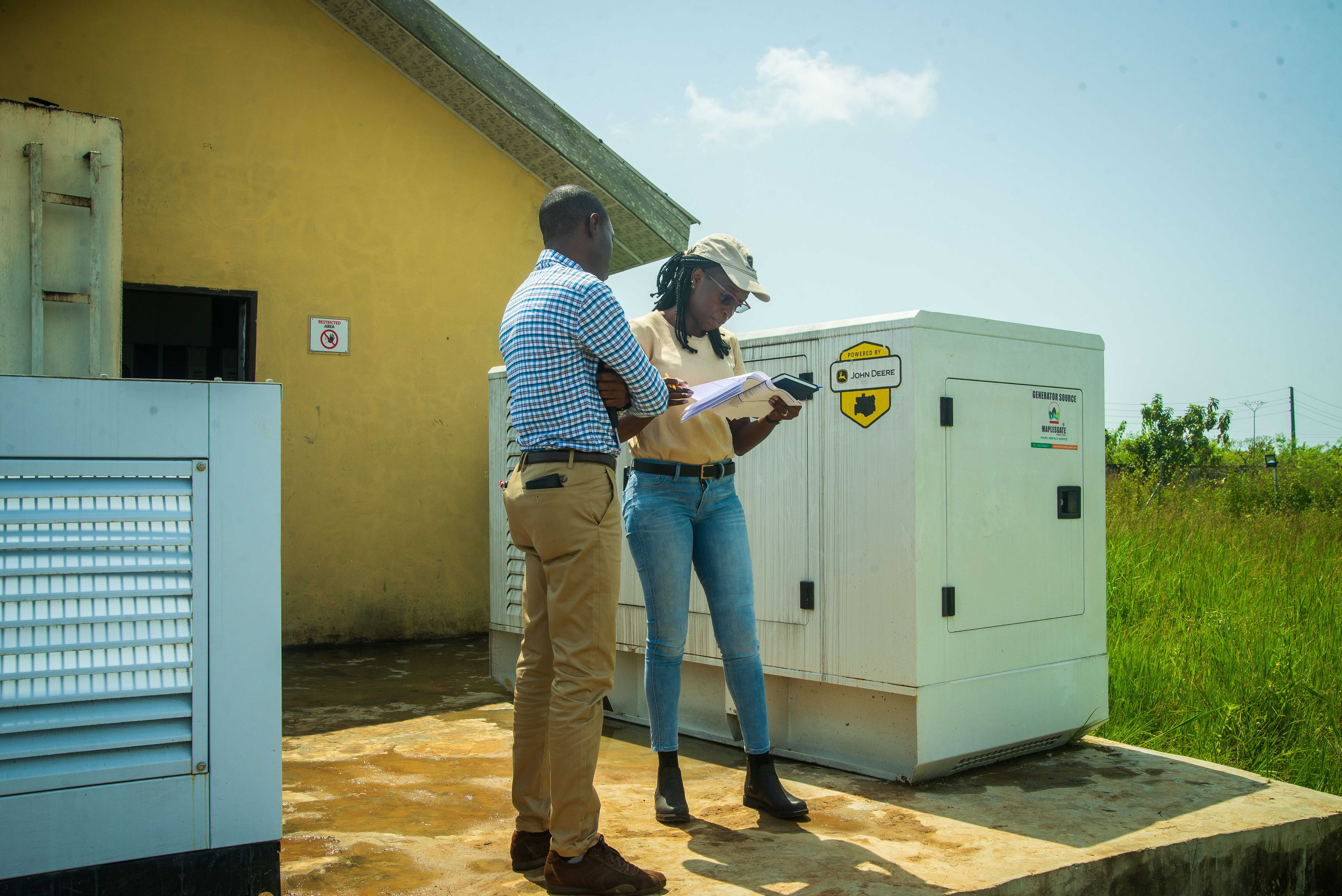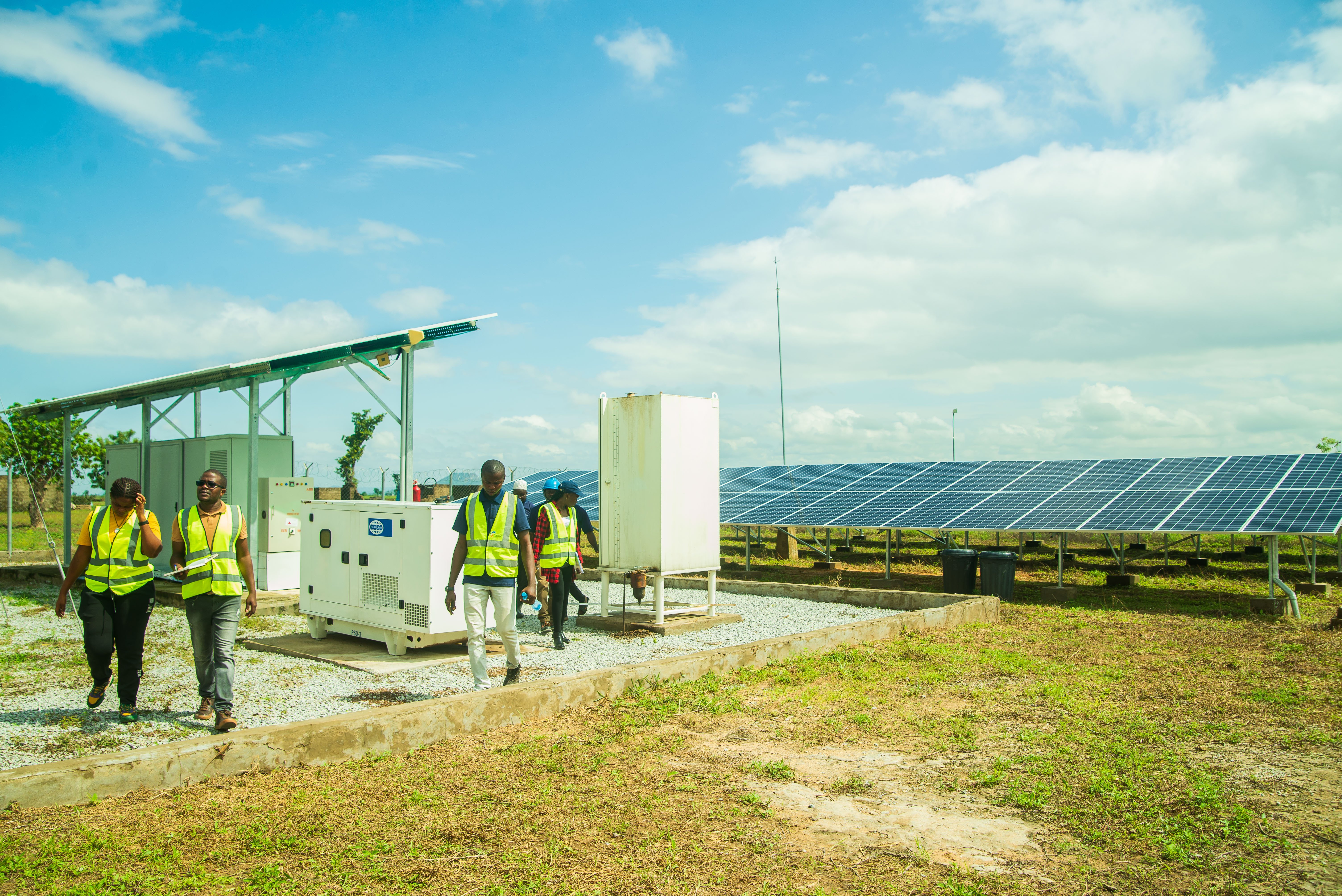
“We build mini-grids”: explaining CrossBoundary Access’ project finance approach in 3 minutes
In this short Q&A, we explain what project finance is, how we use it to build mini-grids, and how our approach is based on the fundamental economics of bringing power to rural customers.
In this short Q&A, we explain what project finance is, how we use it to build mini-grids, and how our approach is based on the fundamental economics of bringing power to rural customers.
CrossBoundary Access is Africa’s first project finance facility for mini-grids. We invest long-term equity and debt through a project finance structure to build mini-grids.
CrossBoundary Access’ project financing approach is based on the fundamental economics of bringing power to rural customers.
Our project financing approach for mini-grids has three distinctive features:
- We directly own mini-grid assets and their customer revenues;
- We allocate all revenues, costs, and risks through long-term contracts, and;
- We aggregate mini-grids into a much larger facility.
All three features of this approach are based on the fundamental economics of bringing power to rural customers: a high capital investment followed by low, steady yields with long payback periods. The following Q&A aims to explain how they’re linked in 900 words – around 3.5 minutes at average reading speed.
Q. Why does rural electrification deliver low, steady yields with long payback periods?
- Because rural customers are typically costly to connect, and have low incomes. A rural customer in Africa will typically have an electricity budget of less than $10/month for electricity, and costs at least $1,000 to connect. (For main grid this can be over $2,000). Assuming a typical 50% capex subsidy, and a 50% operating margin, that leaves $500 to be recovered through $5/month or $60/year of free cash flow. This implies an annual yield of 60/500 = 12% and a payback period of 500/60 = 8 years
- Once these rural customers are connected to the mini-grid, they pay for electricity every month, over the 15 – 20 year lifetime of the projects. This implies that mini-grid assets generate long term, steady cash flows
Q. How can you finance assets that have low, steady yields and long payback periods?
- You need equity and debt financing to match – low cost to match the low yields, and long term to match the payback period.
- This true of all infrastructure assets. Infrastructure typically requires a large upfront capital investment, and then delivers low but steady yields over a long time period. This is why infrastructure capital is typically long-term, and lower cost
Q. How can you attract lower cost, long-term debt and equity?
- There is a fundamental conflict between the need for low cost capital, and long-term capital. Typically, the longer the period of the financing, the more potential risks the investment is exposed to. Higher risk demands higher return. All other things being equal, a long-term loan will have a higher interest rate than a short-term loan.
- The solution to this issue is project finance.
Q. How does project finance reduce long-term risks to justify lower cost, long-term equity and debt?
- Most capital invested in the mini-grid sector to date has been invested through purchasing shares in mini-grid companies. This exposes investors to all the risks that a company faces – both upside risks like new revenue streams and downside risks like overspend on corporate R&D.
- Project finance aims to reduce the amount of risk investors are exposed to by carefully ringfencing the investment of debt and/or equity to a specific set of assets and the long-term cash flows they will generate.
- By adopting this approach, CrossBoundary Access is exposed only to the risks relating to the specific set of mini grid assets we buy. We are not exposed to the risks of the developer’s other businesses or activities (both positive and negative).
- Project finance has been used to fund infrastructure projects for over 100 years. For example, the English road system was renewed in the 18th and 19th century using private sector-funding based on toll revenues.
This is why (1) We directly own mini-grid assets and the revenues from their customers.
Q. Why does project finance require all revenues, costs, and risks to be allocated through long-term contracts?
- Project finance works by fixing as many much of the revenues, costs, and risks over the lifetime of the project as possible. Every revenue line, cost, and risk is specified and allocated between the project owner, lender, operator, and other partners.
- By fixing the cashflows through long-term contracts over the term of the financing, it’s possible to create an investment with very reliable and low risk cashflows, reducing risk and justifying the low cost financing for the duration of the investment.
This is why (2) We allocate all revenues, costs, and risks through long-term contract
Q. Why does project finance only work at scale?
- The process of fixing and allocating all of the revenues, costs, and risks over 10 – 20 years is an extremely intensive process. As the project finance expert E.R. Yescombe says “Unlike other methods of financing projects, project finance is a seamless web that affects all aspects of a project’s development and contracts, and therefore the finance can’t be dealt with in isolation”. Every element of the project – technical, safety, environmental, legal, regulatory, commercial – must be captured in a project financing transaction.
- This comprehensive and intensive process comes with high fixed costs. These high fixed costs only make sense when spread across a much higher value set of assets
- Transaction costs can be as much as $500k for a typical project financing in Africa. An individual mini-grid’s Capex can be as little as $100k. The only way mini-grids can support project finance’s fixed transaction costs is to aggregate many mini-grids into facilities of $10m+
This is why (3) We aggregate mini-grids into a much larger facility.
You can read a more comprehensive overview of CrossBoundary Access’ project finance approach in our white paper.





